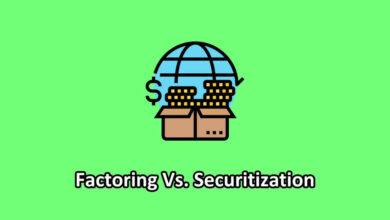Capital is a term that refers to the resources, both tangible and intangible, that an individual, firm, or nation has at their disposal to produce goods and services. Two main types of capital are physical capital and human capital, each of which plays a critical role in the production process. In this article, we will explore the difference between physical and human capital, and how each type of capital contributes to economic growth and development. Also, we are going to cover their examples and key differences with the help of a table and key points.
Physical Vs Human Capital
| Physical Capital | Human Capital |
|---|---|
| Physical capital actually refers to physical assets like machines, computers, tools, and other types of equipment that are used to produce goods and services. | Human capital refers to the skills, education, abilities, knowledge, experience, etc, of the individuals or workers. |
| They are constructed and bought with money. | They are developed through investment in education, training, experience, etc. |
| They are tangible in nature. | They are intangible in nature. |
| Physical capital is tradeable. | Only the services provided can be sold. |
| They are separable from the owner. | They cannot be separated from the owner. |
| Physical capital is the result of the owner’s conscious strategies. | Human capital formation is both a social process and a conscious decision. |
| Physical assets can depreciate over time. | Human capital does not physically depreciate, but can become obsolete with advancements in technology or changes in the job market. |
| In the case of a physical asset, depreciation occurs because of continuous use. | Its depreciation happens as a result of aging and can be reduced to some extent. |
| They can be easily transferred from one to another owner. | They are not transferable. |
| They contribute towards economic growth through the production of goods and services. | They contribute to the growth of the economy by increasing the productive capacity of individuals. |
What is Human Capital?
Human capital refers to the intangible resources or assets of individuals that can be used to produce goods and services. In other words, it is the stock of knowledge and abilities that people bring to the workplace. Human capital is developed through education, training, and experience, and it is considered to be a critical factor in economic growth and development.
One of the key characteristics of human capital is that it is unique to each individual and cannot be replicated. Additionally, human capital is mobile, meaning that people can move from one job to another, taking their knowledge and skills with them. This mobility makes human capital an important factor in determining a country’s competitiveness and ability to attract investment.
Examples
Five of the major examples of human capital are as follows.
- Education and Training, such as degrees and certifications earned by individuals.
- Work experience and on-the-job training, such as the knowledge and skills acquired by workers in a particular field.
- Entrepreneurial skills, such as creativity, problem-solving abilities, and the ability to identify and pursue new business opportunities.
- Leadership skills, such as the ability to motivate and lead teams, as well as decision-making and strategic planning skills.
- Communication and interpersonal skills, such as the ability to communicate effectively, work well with others, and build relationships.
What is Physical Capital?
Physical capital refers to the tangible assets that are used in the production process, such as machinery, equipment, buildings, and infrastructure. Unlike human capital, physical capital can be replicated, and it is typically not mobile.
Physical capital plays a crucial role in the production process, as it allows firms to produce goods and services more efficiently. For example, advanced machinery and equipment can increase production speed and quality, while well-maintained infrastructure can reduce transportation costs and improve logistics.
Examples
Here you can have a look at some of the major examples of physical capital.
- Machinery and Equipment, such as production line machinery in a factory, vehicles used for transportation, and computers used in an office.
- Buildings and Real Estate, such as office buildings, warehouses, and retail spaces.
- Infrastructure, such as roads, bridges, ports, and airports.
- Natural resources, such as minerals, oil, and forests.
- Technology, such as software and hardware used in production processes.
Key Differences Between Physical and Human Capital
While comparing physical vs human capital, here we have included some of the key distinctions between physical and human capital.
- Meaning: Human capital refers to the intangible resources or assets of individuals that can be used to produce goods and services. On the other hand, Physical capital refers to the tangible assets that are used in the production process, such as machinery, equipment, buildings, and infrastructure.
- Replicability: Physical capital can be replicated, while human capital is unique to each individual and cannot be replicated.
- Mobility: Human capital is mobile, meaning that people can move from one job to another, taking their knowledge and skills with them. Physical capital, on the other hand, is typically not mobile.
- Depreciation: Physical capital depreciates over time and needs to be maintained or replaced. On the other hand, human capital can be improved through education, training, and experience.
- Value: Physical capital has a specific monetary value, while the value of human capital is more difficult to quantify.
- Contribution to economic growth: Both physical and human capital plays a critical role in the production process and contribute to economic growth. However, the role that each type of capital plays can vary depending on the stage of development of a country. In developed countries, human capital tends to play a more significant role in economic growth. In contrast, in developing countries, physical capital may be more important.
The following table also shows the difference between physical and human capital.

You Can Also Read:
- Difference Between Capital and Revenue Expenditure
- Difference Between Short-Term and Long-Term Capital Gain
Conclusion
In conclusion, physical and human capital are two critical types of capital that play a significant role in the production process and economic growth. While physical capital refers to the tangible assets used in production, human capital refers to the knowledge, skills, and abilities of individuals. The two types of capital have different characteristics, including replicability, mobility, depreciation, value, and contribution to economic growth.
Understanding the differences between physical and human capital is essential for both firms and governments to make informed decisions about how to allocate resources and promote economic development.




3 Comments